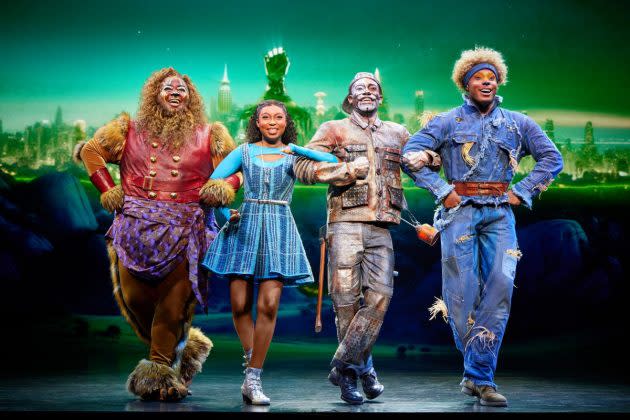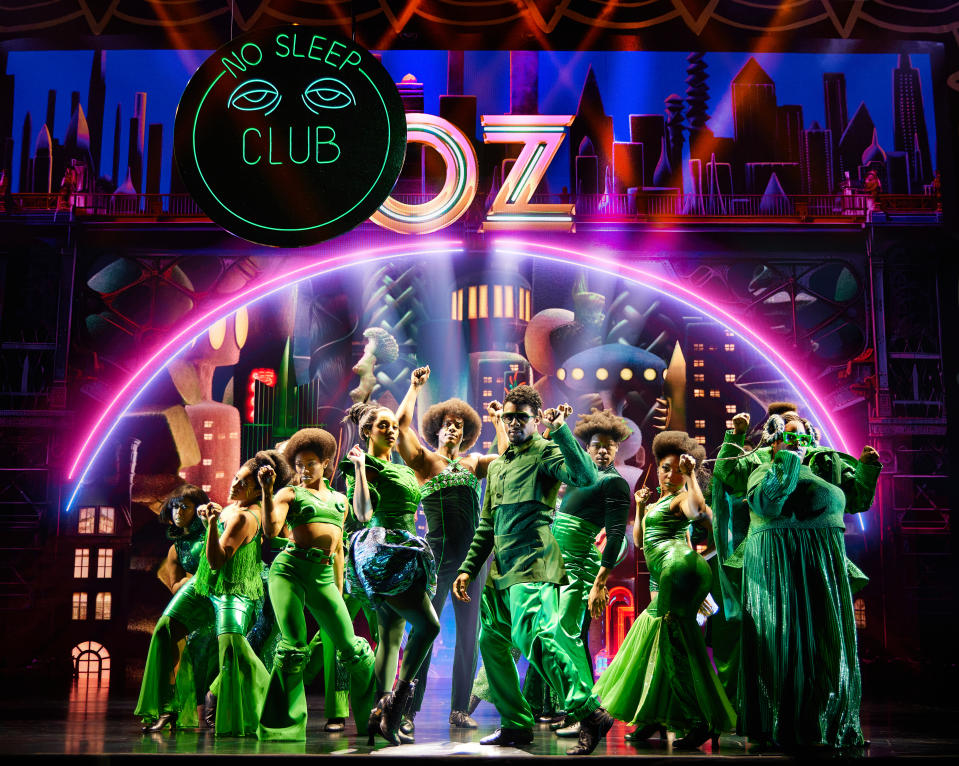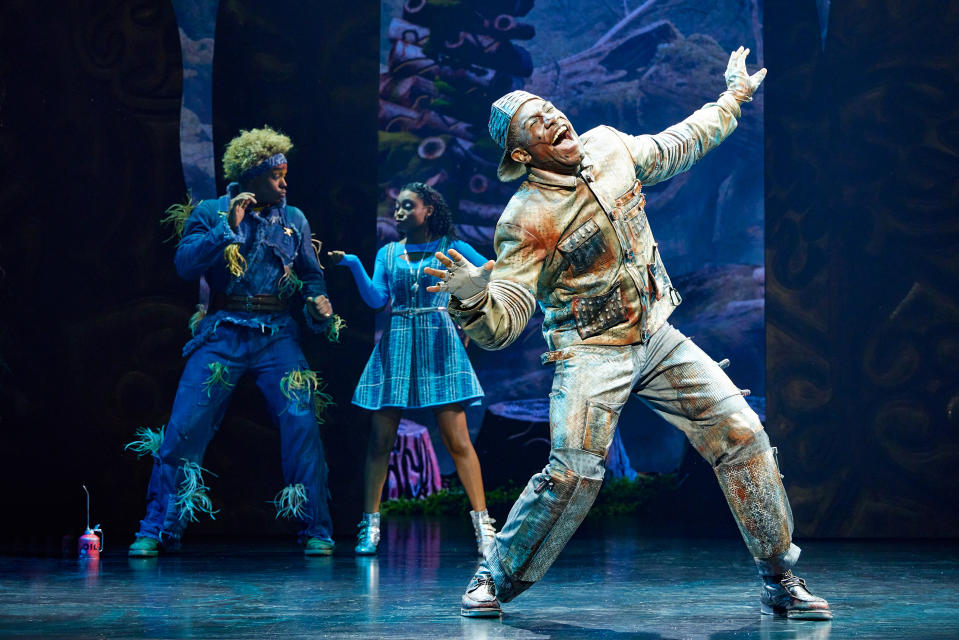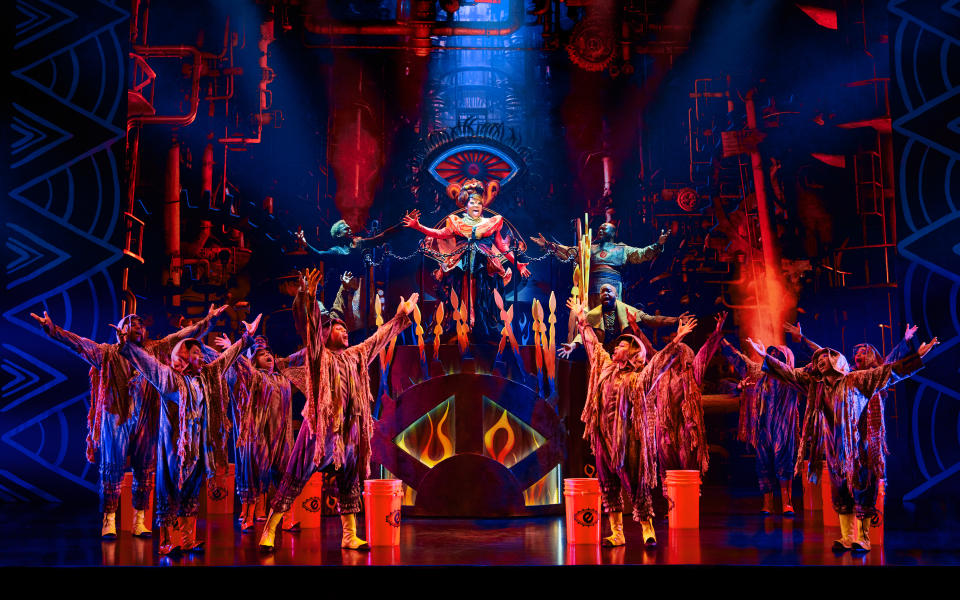‘The Wiz’ Director Schele Williams on How She Honors Show’s Legacy and Layers in Black Culture in Broadway’s Latest Revival

Actor, producer and director Schele Williams was a young girl when she saw a touring production of “The Wiz.” It was 1978 and she was living in Dayton, Ohio.
“It was my introduction to theater, I had seen other shows, but I had never seen Black folks,” Williams says speaking with Variety over Zoom. “It opened up a world of possibility. I listened to that cast album and soundtrack so many times. I watched the movie, and it was part of the culture for me.”
More from Variety
'The Notebook' Review: Broadway Musical of the Popular Romance Hits All-Too-Familiar Notes
How 'The Notebook' Broadway Musical Highlights the Universality of the Story's Enduring Romance
Williams heard there were plans for a revival, but it never came to fruition. And then, she got the call asking if she wanted to direct “The Wiz,” and she accepted. “I had to wrap my head around the idea. I’m going to have the privilege of directing the show that changed my life. It’s a legacy.”
Not only is Williams taking on a show with a legacy, but she’s also making her mark on Broadway. This season, she became the first Black woman in 50 years to direct a musical with “The Notebook.” “The Wiz” is currently in previews, and after a successful national tour it will open at the Marquis Theater on April 17.
“The Wiz” is a reimaging of “The Wizard of Oz” with an all-Black cast. When conceiving her revival and working with William F. Brown’s book and Amber Ruffin’s revised book, Williams knew its legacy was important for both fans and a new generation.
Williams had a few ideas in mind.
Not only did she want to make the piece timeless, but she also wanted to expound on the backstory and from a storytelling perspective, she wanted Dorothy to be the first person to sing on the show. “I wanted to see the show through the protagonist first, which is not the way the original story was constructed,” Williams explains. Furthermore, she deliberately moved the intermission, meaning audiences would have to wait until the second act to meet The Wiz and see the Emerald City. “As a storyteller, I was thinking about how this generation gets to claim this as their own,” she says.
Her creative team consisted of legends of their fields: choreographer JaQuel Knight, who worked with Beyoncé on her “Single Ladies” video; Emmy-award winning costume designer Sharen Davis; Emmy award-winning musician Adam Blackstone, who worked on dance music arrangements; and Oscar winner Hannah Beachler was called on to work on the show’s scenic designs.
As it turned out, Beachler came from the same town as Williams and happened to see that same touring production of “The Wiz” many years ago. The legacy of the show was just as important to her. “This is a Black show, and we’re not going to back down from that because of what anyone says or how anyone might feel,” Beachler says.
Rather than focus on lavish moving set pieces, Williams wanted to continue to lead with humanity. That way, the creatives could utilize the stage space for dancers. “We wanted real dancers and real singers. We have seven principles in our show – this is a show that typically has nine. It was important in the way that we consume entertainment, that we were able to move quickly.”
Beachler’s scenery is minimal, while Daniel Brodie’s production designs transport the characters and audience elegantly from place to place, creating a fantastical world. The space gives room for the characters to dance and move. Beachler’s experience as a production designer in film of using the Volume stage as an extension, brought her cinematic ideas to Brodie who ran with them. “We looked at the video wall as a way of expanding the practical scenery [on stage],” Beachler explains. “I hear people saying they want to go to the Emerald City. When you have big dance numbers and the video wall, it’s still taking you somewhere because it’s extending the world.”

While the scenery appears minimal, Williams encourages audiences to look closer at the design which is deeply layered with elements of Black culture and history. “There are eight or 10 nods in the Emerald City to the Civil Rights Movement. In the background with the poppies, the fields are like braids,” she points out. It doesn’t end there. There are symbols from the Underground Railroad. “It’s there on the trim, the banner and the scarecrow’s quilted jacket.”
Adds Williams, “We were thinking about all these ways we can emphasize Black excellence and Black impact on culture throughout the show.”

As for “The Notebook,” Williams describes it as a “quiet musical.” She was struck by reading the book co-director Michael Greif sent her. Ingrid Michaelson’s music really spoke to her soul and she found Bekah Brunstetter’s book to be both honest and refreshing. “My mom has Alzheimer’s and I happened to be visiting my parents when I read the piece, and it really hit me hard.”
When it came to casting, the idea was to have a multiracial cast. “That meant so much to me. When you hear about universal stories such as cancer and Alzheimer’s, we’re only ever seeing it through a white lens. I never get to see myself experience anything or feel that same empathy and never through a mirror.”
It was important for Williams to present an authentic story and maintain its integrity, not turn the show into one about race.

Wiliams is still working on “Aida” and bringing it back to Broadway. It’s currently touring in Holland, Amsterdam. She hasn’t given up, it’s been 25 years since the show last played. “I had a dream about redoing the opening two days ago.” She adds, “I can’t wait to bring it back.”
Best of Variety
Sign up for Variety’s Newsletter. For the latest news, follow us on Facebook, Twitter, and Instagram.

